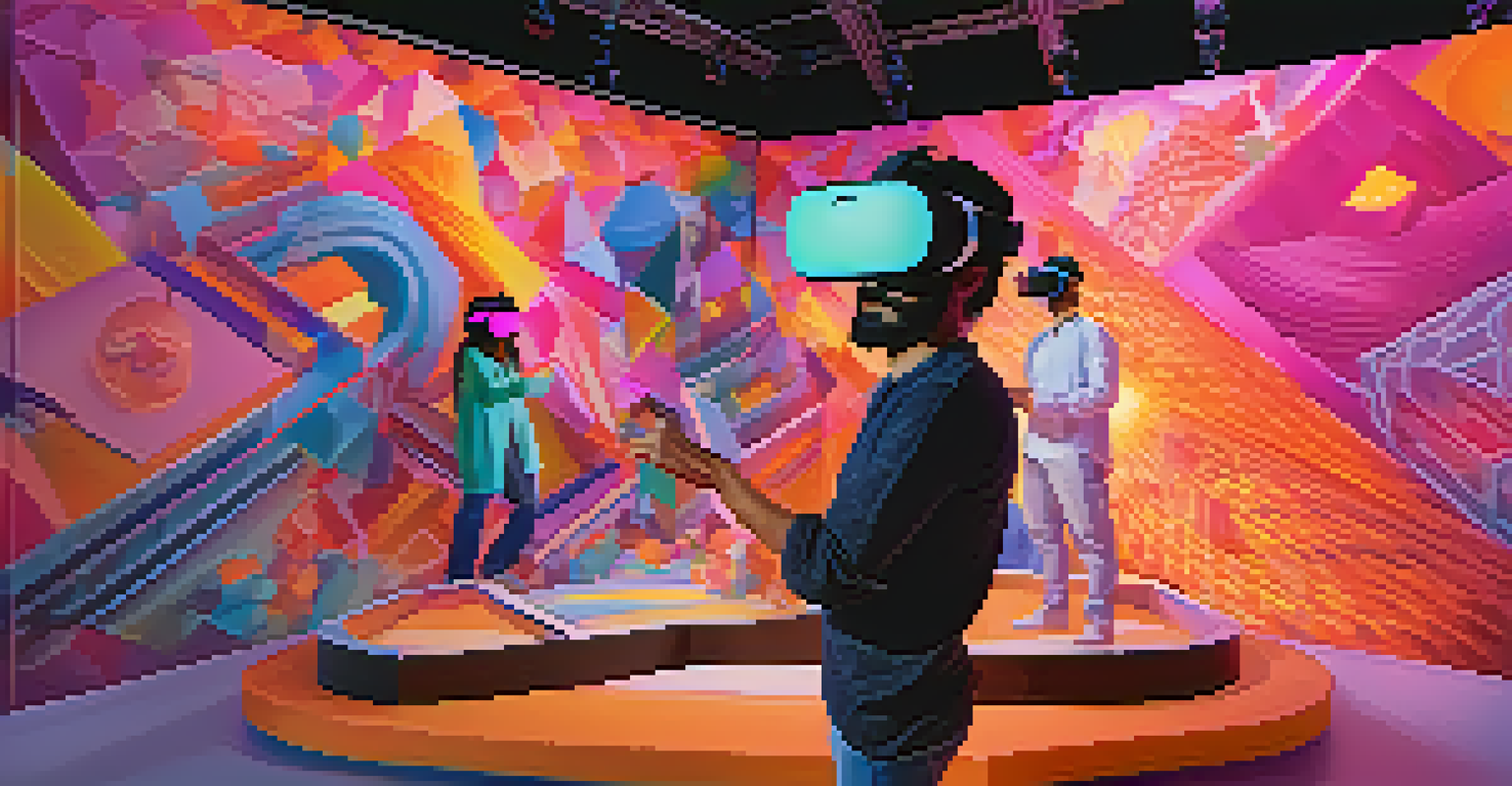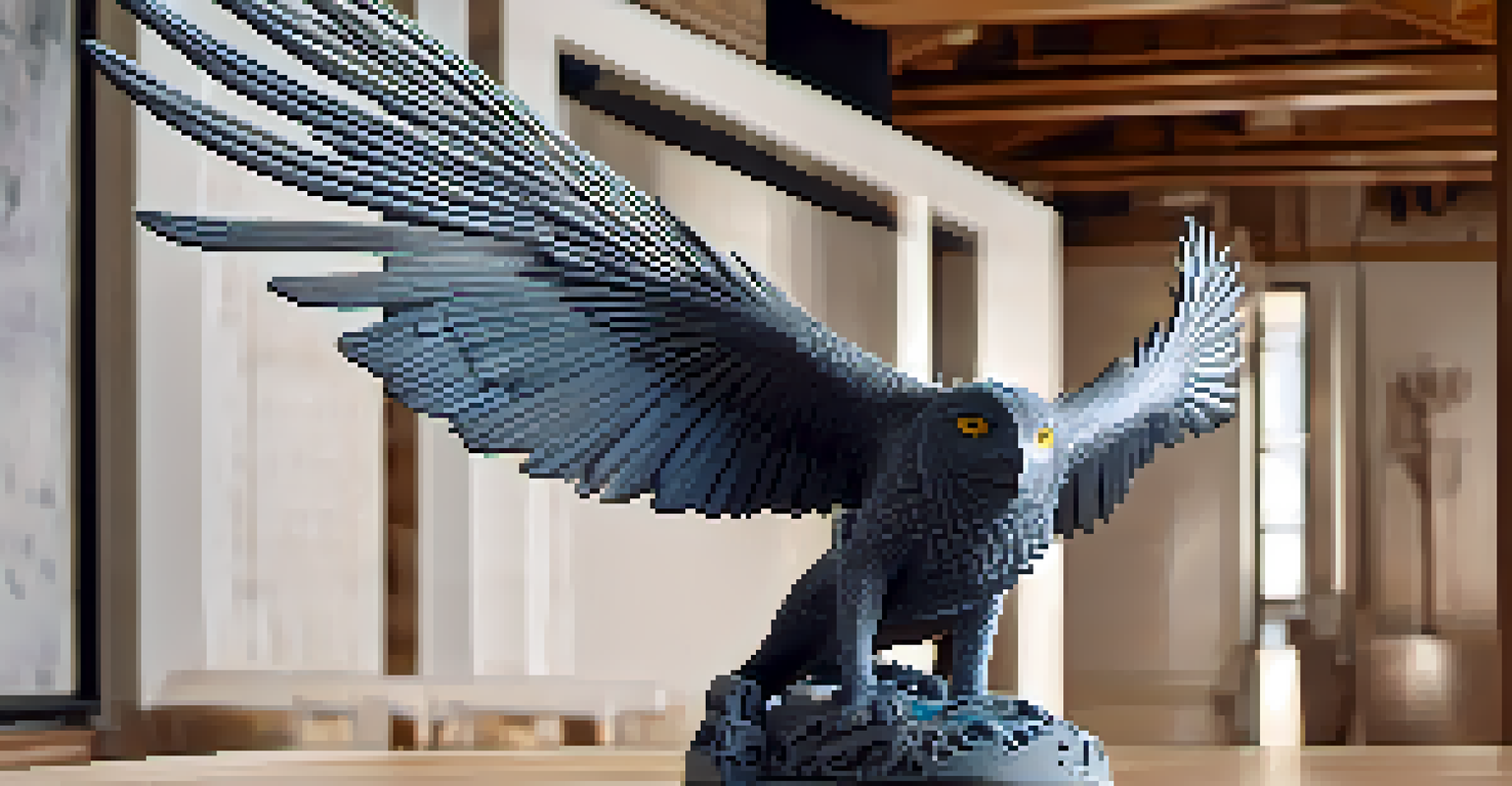Sculpting with Technology: Carving in the Digital Age

Introduction to Digital Sculpting and Its Impact
Digital sculpting merges traditional artistry with modern technology, opening new avenues for creativity. Artists can now create three-dimensional models using software like ZBrush and Blender, which simulate the tactile experience of clay. This blend of art and technology allows for unprecedented precision and flexibility in sculpting, enabling artists to experiment without the constraints of physical materials.
The great thing about digital sculpting is that it opens up a whole new world of possibilities for artists, allowing them to create without the limitations of physical materials.
For instance, an artist can sculpt a character in a digital space, making alterations in real-time, something that would be time-consuming with traditional methods. This immediate feedback loop not only enhances the creative process but also reduces the material waste associated with physical sculpting. Ultimately, digital sculpting democratizes art, allowing more individuals to explore their creative potential.
As technology continues to evolve, the possibilities for digital sculptors are virtually limitless. From 3D printing to virtual reality, artists can now share and produce their work in ways that were once unimaginable. This evolution raises intriguing questions about the nature of art and creativity in the digital age.
The Tools of the Trade: Software and Hardware Essentials
To dive into digital sculpting, artists must familiarize themselves with specific tools and software. Programs like ZBrush and Mudbox are leading choices, providing intuitive interfaces and robust features tailored for sculpting. Additionally, hardware like graphics tablets enhances the experience, allowing for precise control and a natural drawing motion.

For example, using a stylus on a tablet can mimic the feel of working with clay, giving artists the freedom to create intricate details. Furthermore, the rise of augmented and virtual reality tools is introducing new dimensions to the sculpting process, offering immersive environments where artists can sculpt in 3D space. This seamless blend of hardware and software is revolutionizing how art is created.
Digital Sculpting Revolutionizes Art
Digital sculpting merges traditional artistry with advanced technology, offering artists unprecedented flexibility and precision.
Ultimately, mastering these tools is crucial for anyone looking to make their mark in the digital sculpting world. As artists become more adept at using technology, they can push the boundaries of their creativity and transform their artistic vision into reality.
3D Printing: Bridging the Digital and Physical Worlds
One of the most significant advancements in digital sculpting is the ability to 3D print creations. This technology allows artists to take their digital models and transform them into tangible objects, merging the virtual and physical realms. With a 3D printer, an artist can produce a sculpture that can be touched and displayed in the real world.
Art is not a thing; it is a way. It's a way of seeing the world, and digital tools give us new lenses to reimagine that vision.
For instance, a digital sculptor may design a complex figure on their computer, and once satisfied, they can send it to a printer that layers materials to bring it to life. This process not only showcases the artist's work but also opens up new possibilities for mass production and replication. Additionally, 3D printing can significantly reduce the time and effort required to create physical sculptures.
However, it's essential to consider the implications of 3D printing in the art world. As this technology becomes more accessible, questions arise about originality, copyright, and the definition of artistry itself. The relationship between digital and physical can provoke intriguing conversations about the future of sculpture.
Virtual Reality: Sculpting in Immersive Environments
Virtual reality (VR) is another groundbreaking technology reshaping the sculpting landscape. Artists can enter a fully immersive digital environment where they can sculpt freely, as if they were working in a physical studio. Tools like Oculus Medium and Tilt Brush provide an engaging platform for artists to create in 3D space, making the process intuitive and exhilarating.
Imagine stepping into a virtual world where you can manipulate your sculpture from all angles, adding layers and details with a simple gesture. This immersive experience allows for a deeper connection to the artwork and can inspire new ideas and techniques. Additionally, VR can facilitate collaborative projects, where multiple artists can share and build on each other's work in real time.
3D Printing Bridges Digital and Physical
The advent of 3D printing allows artists to transform digital models into tangible sculptures, redefining the connection between virtual and physical art.
As VR technology continues to advance, its potential for sculpting becomes more exciting. Artists can not only create but also share their immersive experiences, further blurring the lines between creator and audience. This shift promises to redefine how we interact with art and the creative process.
The Role of AI in Sculpting and Design
Artificial intelligence (AI) is making waves in various creative fields, including digital sculpting. AI-powered tools can assist artists by automating time-consuming tasks, enabling them to focus on their creative vision. For example, AI algorithms can analyze a sculptor's style and suggest enhancements or modifications, streamlining the workflow.
Moreover, AI can generate unique designs based on specific parameters set by the artist, pushing the boundaries of creativity. This collaboration between human and machine can lead to surprising and innovative outcomes, showcasing the potential of technology in enhancing artistic expression. However, it also raises questions about authorship and the role of the artist in the creative process.
As artists embrace AI in their work, they must navigate this evolving landscape. The integration of AI tools is not about replacing the artist but rather augmenting their capabilities, allowing for new forms of expression and creativity. This fusion of art and technology is redefining what it means to be a sculptor in the digital age.
Challenges and Considerations: The Other Side of Technology
While technology has ushered in new possibilities for sculptors, it also presents unique challenges. One significant concern is the digital divide; not all artists have equal access to the tools and resources needed for digital sculpting. This disparity can create barriers, especially for emerging artists who may lack the financial means to invest in expensive software and hardware.
Additionally, as the art world increasingly embraces digital mediums, traditional sculptors may feel the pressure to adapt or risk being left behind. This shift can be daunting, as it requires learning new skills and techniques that may not align with their established practices. Artists must find a balance between preserving traditional methods and exploring innovative technologies.
AI Enhances Artistic Creativity
Artificial intelligence tools assist artists by automating tasks and generating unique designs, fostering collaboration between human creativity and machine assistance.
Moreover, ethical considerations arise regarding the use of digital tools and AI in art creation. As artists navigate these challenges, it's crucial to foster a community that supports diversity and inclusion in the digital sculpting space. By addressing these issues, the art world can move forward while honoring the rich history of traditional sculpting.
The Future of Sculpting: A Blend of Tradition and Innovation
Looking ahead, the future of sculpting lies in the harmonious blend of traditional techniques and modern technology. As artists become more proficient in digital tools, they can incorporate these methods alongside their physical sculpting practices. This fusion can lead to exciting new forms of art that honor the past while embracing the future.
For example, an artist might create a traditional clay sculpture, then use 3D scanning to digitize it, allowing for further manipulation and experimentation in the digital realm. This synergy can result in innovative and unique pieces that showcase the strengths of both approaches. As the lines between digital and traditional art continue to blur, the potential for creative expression expands exponentially.

Ultimately, the evolution of sculpting will reflect the broader changes in society and technology. By embracing both tradition and innovation, artists can carve out their unique paths and redefine the art form for generations to come. As we move forward, the journey of sculpting in the digital age will be one of exploration and discovery.